Abstract
The transfer of cultured tomato cells (Lycopersicon esculentum cv VFNT-Cherry) to a low water potential environment resulted in an increased dry weight to fresh weight ratio accompanied by a rapid accumulation of proline. Proline content continued to increase as osmotic adjustment and growth occurred. The initial increase in proline concentration was accompanied by a drop in turgor. However, proline levels continued to increase with a gain in turgor during osmotic adjustment. Thus, the accumulation of proline depended not only on cell water potential, or on the initial loss of turgor but more closely on cell osmotic potential. The ultimate level of proline depended on the level of adaptation. Proline levels remained high after more than 100 cell generations in low water potential media, but declined rapidly after transfer to media with a less negative water potential. Addition of exogenous proline to the medium during water stress and during osmotic downshock alleviated the normally resulting inhibition of growth. The results suggest a positive role for proline accumulation in adaptation of cells to changing external water potentials.
Full text
PDF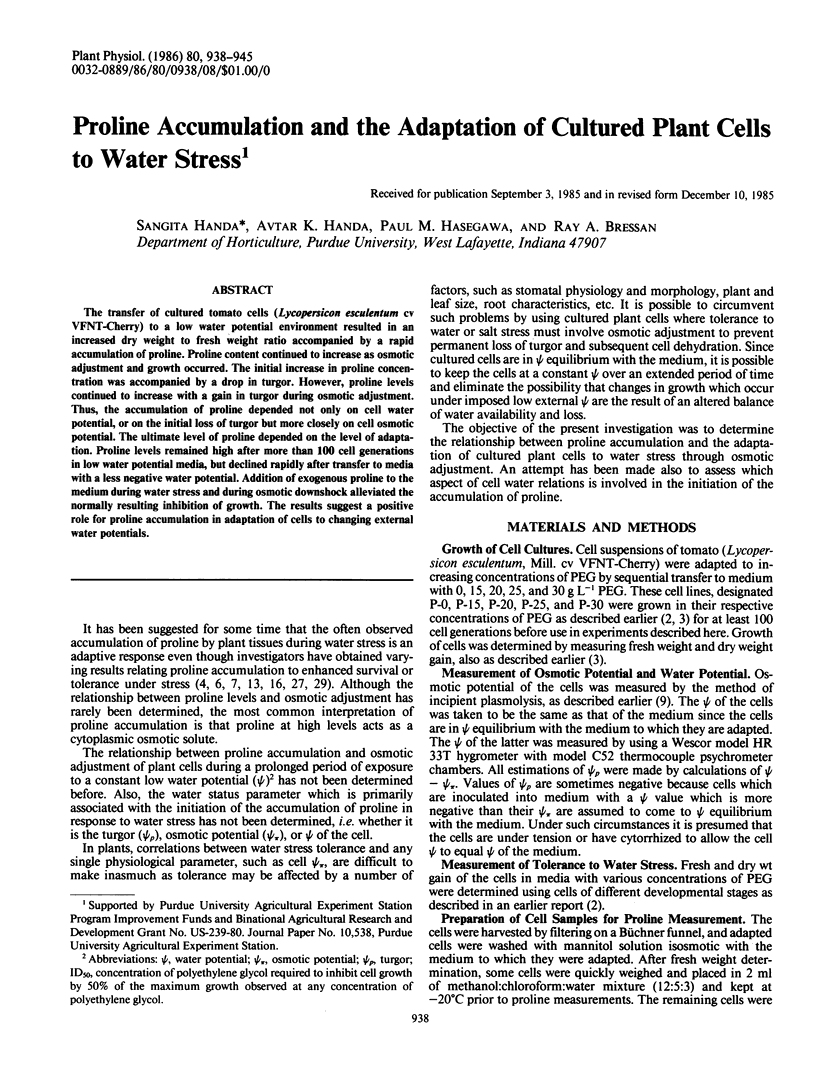
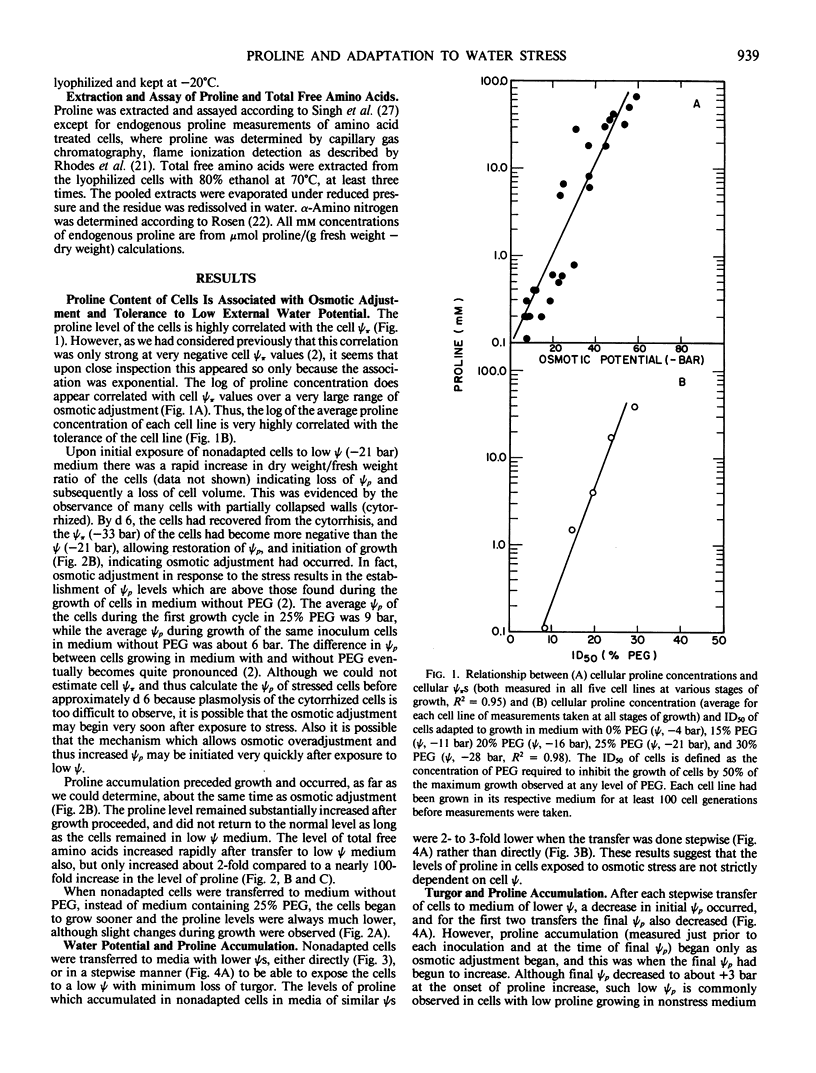

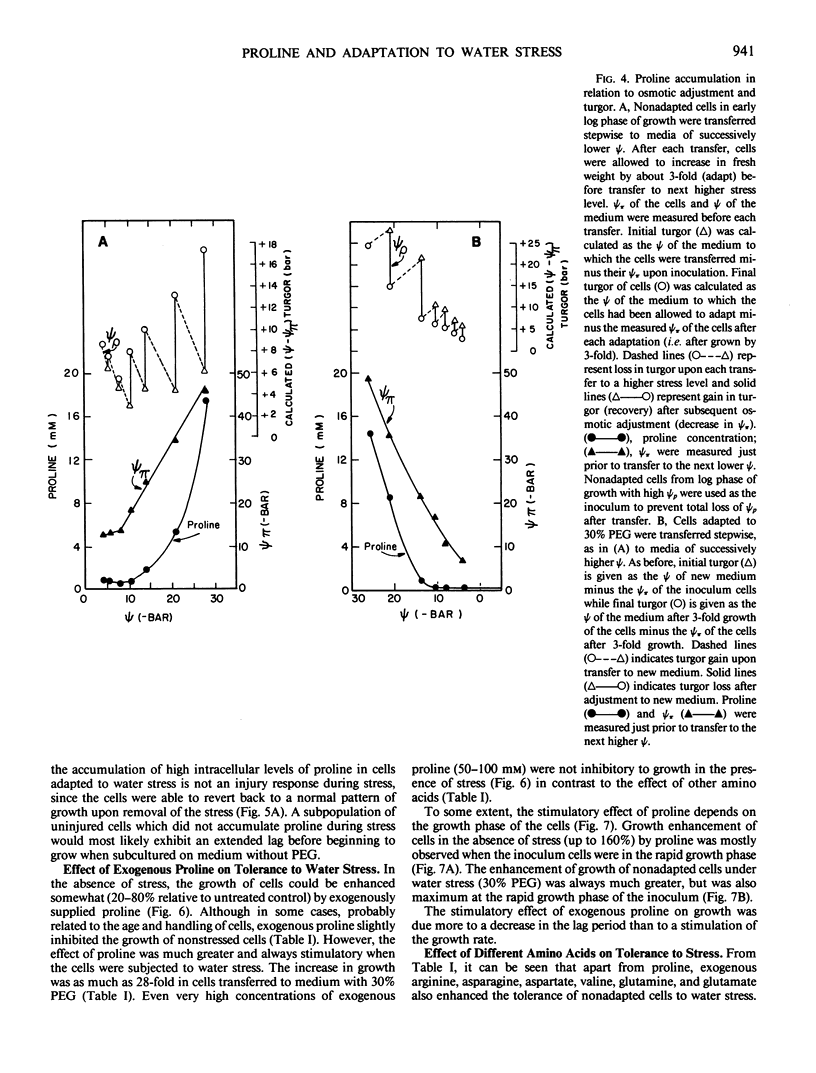

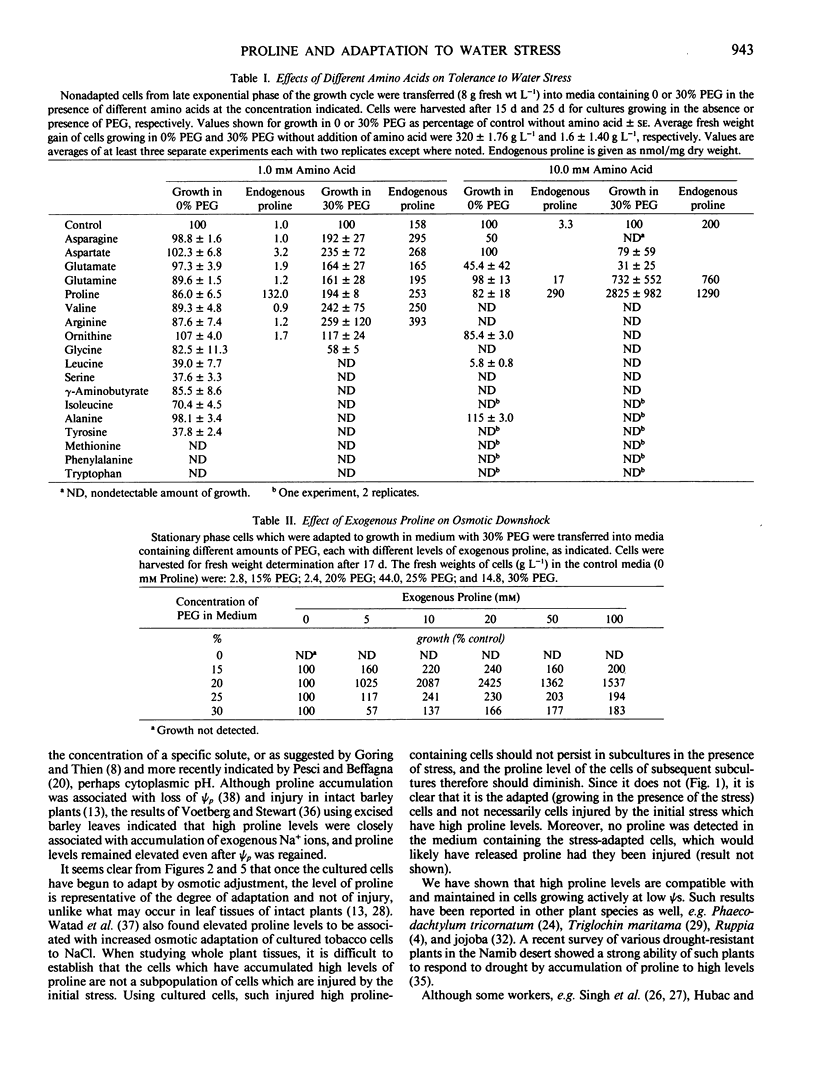
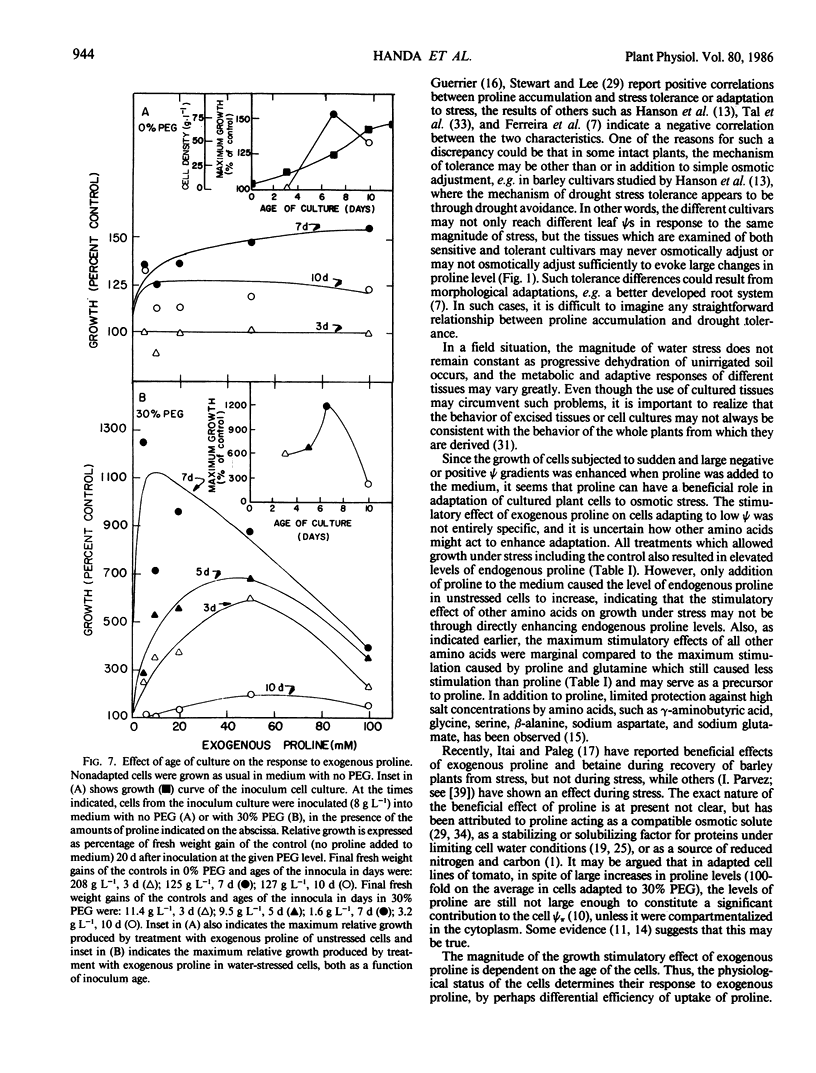

Selected References
These references are in PubMed. This may not be the complete list of references from this article.
- Bressan R. A., Handa A. K., Handa S., Hasegawa P. M. Growth and water relations of cultured tomato cells after adjustment to low external water potentials. Plant Physiol. 1982 Nov;70(5):1303–1309. doi: 10.1104/pp.70.5.1303. [DOI] [PMC free article] [PubMed] [Google Scholar]
- Handa A. K., Bressan R. A., Handa S., Hasegawa P. M. Characteristics of cultured tomato cells after prolonged exposure to medium containing polyethylene glycol. Plant Physiol. 1982 Feb;69(2):514–521. doi: 10.1104/pp.69.2.514. [DOI] [PMC free article] [PubMed] [Google Scholar]
- Handa S., Bressan R. A., Handa A. K., Carpita N. C., Hasegawa P. M. Solutes contributing to osmotic adjustment in cultured plant cells adapted to water stress. Plant Physiol. 1983 Nov;73(3):834–843. doi: 10.1104/pp.73.3.834. [DOI] [PMC free article] [PubMed] [Google Scholar]
- Paleg L. G., Stewart G. R., Bradbeer J. W. Proline and glycine betaine influence protein solvation. Plant Physiol. 1984 Aug;75(4):974–978. doi: 10.1104/pp.75.4.974. [DOI] [PMC free article] [PubMed] [Google Scholar]
- ROSEN H. A modified ninhydrin colorimetric analysis for amino acids. Arch Biochem Biophys. 1957 Mar;67(1):10–15. doi: 10.1016/0003-9861(57)90241-2. [DOI] [PubMed] [Google Scholar]
- Rhodes D., Myers A. C., Jamieson G. Gas Chromatography-Mass Spectrometry of N- Heptafluorobutyryl Isobutyl Esters of Amino Acids in the Analysis of the Kinetics of [N]H(4) Assimilation in Lemna minor L. Plant Physiol. 1981 Nov;68(5):1197–1205. doi: 10.1104/pp.68.5.1197. [DOI] [PMC free article] [PubMed] [Google Scholar]
- Schobert B., Tschesche H. Unusual solution properties of proline and its interaction with proteins. Biochim Biophys Acta. 1978 Jun 15;541(2):270–277. doi: 10.1016/0304-4165(78)90400-2. [DOI] [PubMed] [Google Scholar]
- Singh T. N., Aspinall D., Paleg L. G. Proline accumulation and varietal adaptability to drought in barley: a potential metabolic measure of drought resistance. Nat New Biol. 1972 Apr 12;236(67):188–190. doi: 10.1038/newbio236188a0. [DOI] [PubMed] [Google Scholar]
- Voetberg G., Stewart C. R. Steady state proline levels in salt-shocked barley leaves. Plant Physiol. 1984 Nov;76(3):567–570. doi: 10.1104/pp.76.3.567. [DOI] [PMC free article] [PubMed] [Google Scholar]
- Watad A. E., Reinhold L., Lerner H. R. Comparison between a Stable NaCl-Selected Nicotiana Cell Line and the Wild Type : K, Na, and Proline Pools as a Function of Salinity. Plant Physiol. 1983 Nov;73(3):624–629. doi: 10.1104/pp.73.3.624. [DOI] [PMC free article] [PubMed] [Google Scholar]


